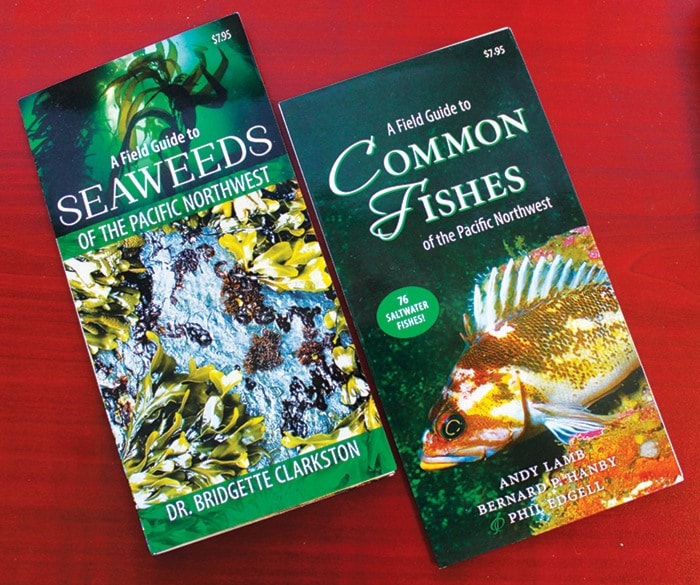If you like paddling, or beach combing, or just being near the ocean, you’ll want to take a look at two very handy – as in pocket sized and waterproof – accordion booklets put out by Harbour Publishing.
A Field Guide to Common Fishes of the Pacific Northwest, by Andy Lamb, Bernard Hanby and Phil Edgell will help you identify 76 saltwater fish.
To help you learn a little about the environment those fish swim in, you can pick up A field Guide to Seaweeds of the Pacific Northwest by Dr. Bridgette Clarkston.
Each of these guides is about the size of a brochure, but opens out to 16 information rich pages.
At $7.95 they are an inexpensive introduction to our ocean environment, good for “fishermen, divers, beachcombers and anyone interested in the marine life that fills our surrounding waters.”
For anyone wanting to delve deeper into the ocean environment, the Common Fishes guide recommends two other Harbour publications: Coastal Fishes of the Pacific Northwest, and Marine Life of the Pacific Northwest.
Common Fishes is strictly an identification guide, with some very basic information about who is likely to see or use each species.
Along with a photo and brief description, the entries are accompanied by symbols that indicate the species is of interest, and likely to be encountered by: recreational fishermen,sport divers, commercial harvesters, beachcombers and naturalists, or as seafood.
The Copper rockfish which appears on the cover, for example, is described as having the Latin name Sebastes Caurnus. It grows to 66 cm, and the white along its lower rear sides and belly area is distinctive. It’s of interest and likely to be encountered by just about everyone reading the guide.
The guide to seaweeds takes a more educational approach, talking in general about seaweeds, their environments, their parts and how they function, and what their uses might be.
“Seaweeds are, in many ways, the plants of the sea,” the guide begins. “They have leaf, stem and root-like parts, make their own food using photosynthesis and create coastal marine meadows and forests that provide shelter and food for an amazing array of ocean life.
“Yet seaweeds are different from land plants…”
Discovering how, and what unique adaptations they have made to live in the ocean, is the pleasure and insight this handy pocket guide has to offer.
You can ask for the Pacific Northwest guides to fish and seaweeds at your favorite bookstore, and get more information at harbourpublishing.com.
